Areas of Cyprus
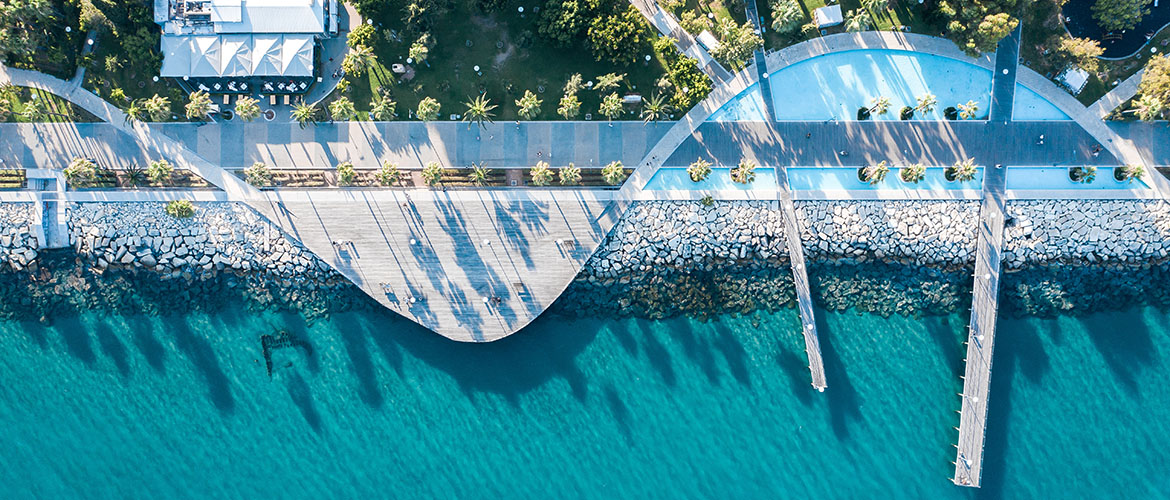
Cyprus is the third largest island in the Mediterranean Sea, is in the eastern-most corner of the european Union, and a strategic post throughout the centuries. Cyprus has a robust, market-driven economy supported by a stable democracy and driven by a diverse, well-educated, skilled workforce, along with an excellent telecommunications and infrastructure system and the lowest tax regime in the EU. The country’s currency is the euro.
Cyprus has become the destination of choice for investors in search of an ideal location for their company headquarters and operational activities. Cyprus, which has a long established reputation as a safe and secure location for commercial and business activities, continues to develop into an ideal hub for doing business between the Middle east, Africa, Asia and europe. Cyprus offers ease of doing business in a professional environment in the surroundings of a sophisticated culture and advanced quality of life, both for multinationals as well as small and medium enterprises.
By investing in an EU member state such as Cyprus, a market of over 500 million citizens is readily available. An EU member state since 2004 and a member of the European Monetary Union since 2008, Cyprus provides a thriving market oriented economic system with the lowest corporate tax regime in the EU, combined with a range of double tax treaties with over 43 countries worldwide. Cyprus offers relatively low operating costs for high quality services, including banking, tax accounting, auditing, business administration, legal processing, trustee, investment, brokerage and funds management.
Cyprus possesses an advanced transport and telecommunications infrastructure with state-of-the-art high-speed internet and mobile telecommunications, two international airports (Larnaca and Paphos) and sea ports (Limassol and Larnaca), with close geographic proximity to the Suez Canal.
Cyprus is located in the ideal geographical position and can act as a hub for investments to europe and to countries of Middle east, Gulf States, Africa and Asia. Cyprus provides the ideal environment to set up your business operations effectively and efficiently.
Protaras
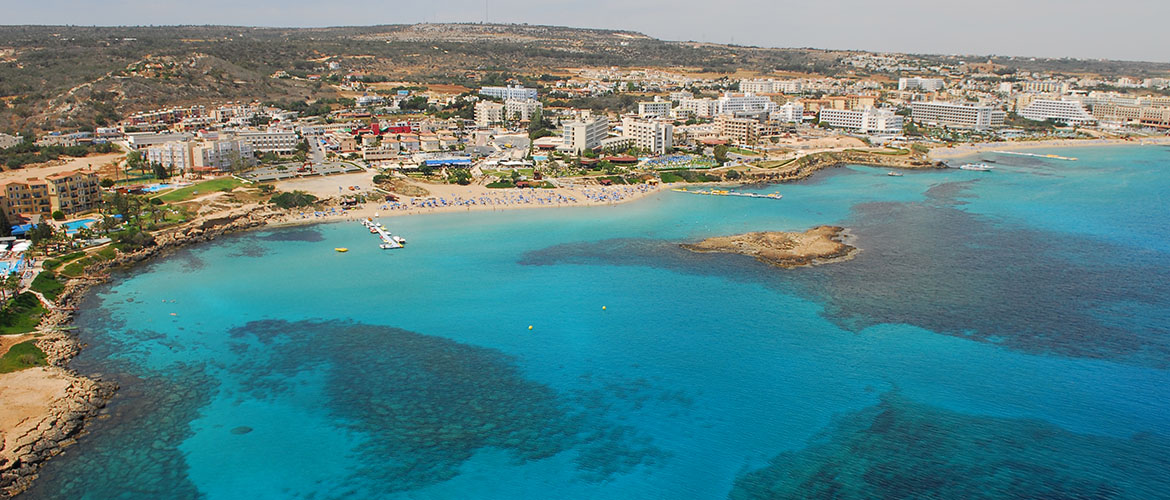
Protaras is a predominantly tourist resort which comes under the administrative jurisdiction of Paralimni Municipality in Cyprus.
Protaras is also a haven for tourists because of its stunning natural beauty, which makes it a perfect vacation destination. Investors are getting attractive investment returns on their buy-to-let and off-plan investments. The holiday resorts also attract holiday-home buyers.
Many claim that a holiday in Protaras, Cyprus is an unforgettable and unique experience as this holiday destination is acclaimed for some of the most beautiful beaches of the island; renowned for their golden sand and sparkling clear waters. Protaras has clear sky-blue waters and sandy beaches, the most well-known of which is Fig Tree Bay. Protaras has expanded into a modern holiday resort of considerable size with tens of luxury capacity hotels, hotel apartments, villas, restaurants, pubs and associated facilities. Being quieter than Ayia Napa and having less of a club scene, it has a reputation of catering more for family and Cypriot tourism. Cape Greco is a 5 minute drive from the centre of Protaras, and is considered one of the most beautiful places on the island. Agia Napa, is also only a ten minute drive away, giving another alternative for an unforgettable night. (a bus service runs regularly between the 2 towns)
In ancient times, where Protaras is now located, stood the old city-state of Leukolla. The city possessed a small safe harbour where the Athenian Demetrius Poliorketes sought refuge in the year 306 BC, lying in wait for Ptolemeos, one of the successors of Alexander The Great. In the ensuing battle, Ptolemeos was defeated and fled to Egypt, leaving Cyprus in the hands of Demetrius for a short time. Protaras is also referred to as "the land of windmills", maintaining the nostalgic quality of the past.
Ayia Napa
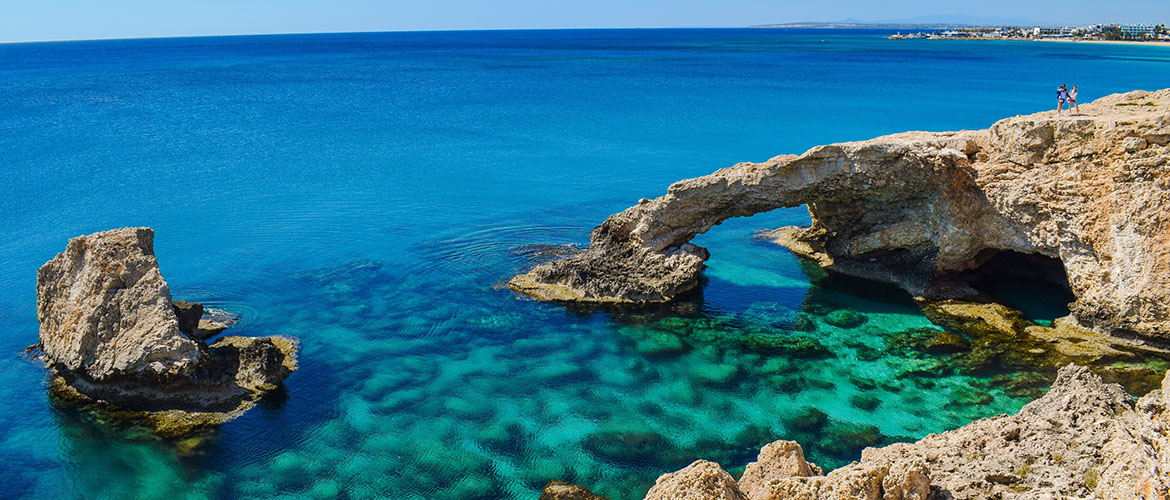
Once, Ayia Napa was a small fishing village in the eastern corner of Cyprus. Today, Ayia Napa is a hotspot for holidaymakers looking for a lively vacation. More than 1,000,000 tourists each summer visit ayia napa & protaras resort , making it the most popular holiday destination in Cyprus. Located in the East coast next Paralimni, Ayia Napa, along with Protaras resort, is famous for the superb golden sandy beaches and vestiges of its cultural heritage
Investors are getting attractive investment returns on their buy-to-let and off-plan investments. The holiday resorts also attract holiday-home buyers
There is a ancient Venetian monastery surrendered by a 6 centures-year-old Sycamore tree, and a quaint harbour – fishing shelter of numerous colourful traditional fishing boats. In a short distance, just few kilometers away from Ayia Napa, you find the resort of Protaras which is more restrained and is much more suited to family holidays. Both resorts have excellent beaches, the most famous being Nissi Beach and Fig Tree Bay. Other popular beaches include Nissi Bay, west of Ayia Napa; Cape Greco, a preserved higly rich ecological area, is the most important attraction to the east, where the challenge is to leap from the rocks into the sea; and Konnos Bay, the most secluded sandy beach of Cape Greco, where there is a beach café and water sport activities.
Cape Greco
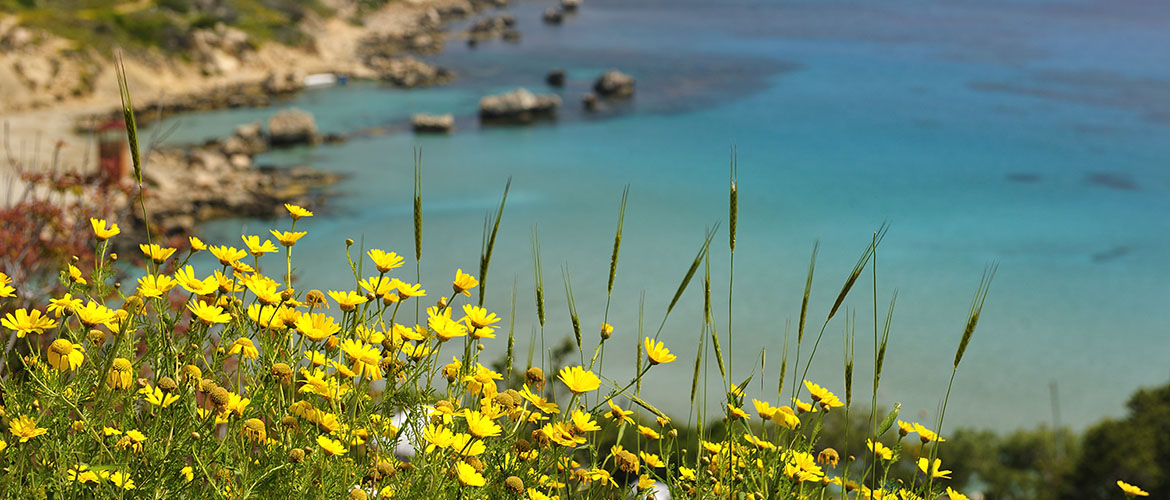
A stunning landmark of natural beauty spread over an area of 4.000.000 m2, Cape Greco is an unspoiled nature reserve situated between Ayia Napa and Protaras holiday resorts. It is considered one of the top natural attractions on the island due to the unique tranquility of the area and the variety of landscapes. There are many coastal pathways, stunning sea caves and a seashore which is worth exploring. Cape Greco, a protected park that offers amazing views all during the year, is one of the few tourist places to visit that offers not only stunning views of the Ayia Napa coast and the Mediterranean sea.
The crystal clear waters of the Cape Greco sea shore are amazing. They seem to be like blue mirrors reflecting the sun's light and they provide the perfect backdrop for photographs and daily visits by boats from Ayia Napa & Protaras. Wherever there are small bays, the boats make frequent stops and their passengers have an opportunity to dive and swim in these waters.
Sea caves are all around Cape Greco and one often sees people diving off the cliffs of the Cape into the sea, scuba diving, snorkeling and deep sea fishing. To grab the full beauty of these cliffs and caves a boat trip from Ayia Napa or Protaras is highly recommended.
Cape Greco area is covered by coastal shrubs, mostly Juniperus phoenicea and during spring time, plants such as chrysanthemums, poppies, anemones. There about 300 plant species in the area, 11 of which are endemic. Many wild birds and small animals are seen here, such as partridge, wood pigeon, crow, owl, as well as a large number of migratory birds, which stop on the island to rest. These include blackbirds, thrushes etc. Foxes, hares and various species of bats, reptiles and butterflies are also seen here. An old lighthouse, which is no longer in use, provides a perfect watching tower for bird watchers.
There are 9 Cape Greco Walks for hikers and people that like to enjoy the beauty of the area. According to Cyprus Tourism Organisation, one of these trails forms part of the European Long Distance Trail E4, running from Gibraltar to Cyprus. The 2 kilometers Aphrodite nature trail which goes along the north east coast of the Cape Greco is part of the Aphrodite Cultural Route and commemorates the link with the goddess. Another trail leads to the small white washed church of Agii Anargyri with steps down to the sea where the locals believe that Holy Water exists. The trail leading to the so-called Cyclops’ caves provides hikers an opportunity to stop at the nearby picnic site for a pleasant rest.
Paralimni
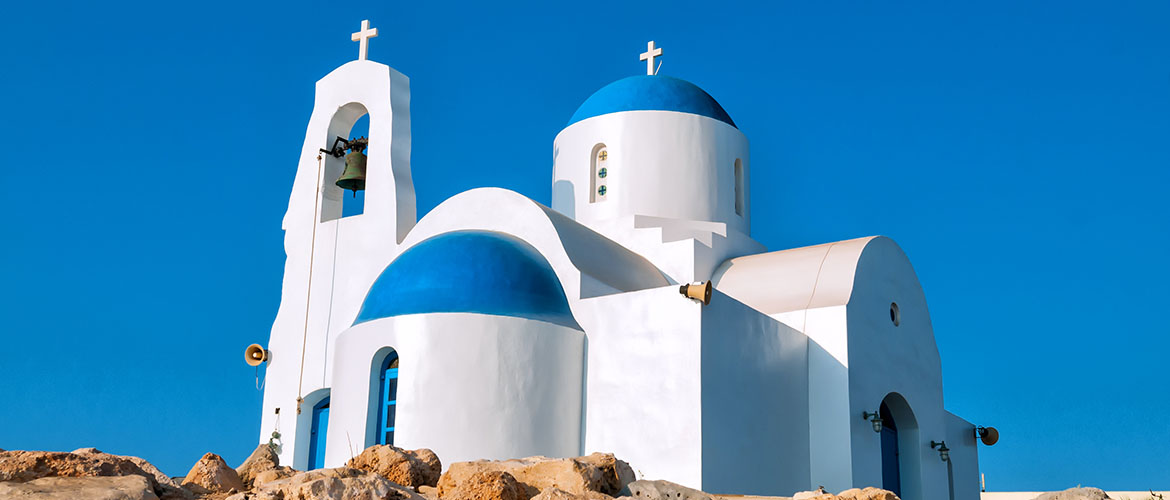
Paralimni is a coastal town situated in the south eastern part of Cyprus and is the biggest municipality in the Famagusta district. Paralimni has a rich and ancient history dating back to Neolithic and Hellenistic / Roman times. Eolith findings in the area of Nissia at Protaras date from the 7th millenium B.C. and a radial cave with tombs, bones and amphorae recently discovered in Protaras near the famous beach of fig tree bay, appears to belong to the Hellenistic or Roman period. It became a municipality in 1986 after a popular referendum. According to the recent population census the town has a population of about 18,000 but due to the vast inflow of foreign residents and tourists this number is increasingly grown during summer months. Economy is mainly based on tourism, services, the business sector and agriculture. Paralimni municipality is known as the land of windmills and as a beautiful tourist resort.
Architecturally, Paralimni has been nondescript, as very little (if anything) remains of the original village. Outside of the town centre, the houses are little more than small rectangular blocks, but this is compensated for by their attractive gardens, especially when the trees are in blossom. The new and emerging generations who earn higher salaries than before are spending larger amounts of money in building modern and picturesque houses.
At the heart of Paralimni lies a shopping centre and a small entertainment scene, including modern cafes and bars. Because Paralimni has rapidly grown in size, the island's biggest food retailers, such as Carrefour have built or rented branches there. There are also many local supermarkets, such as Kokkinos.
